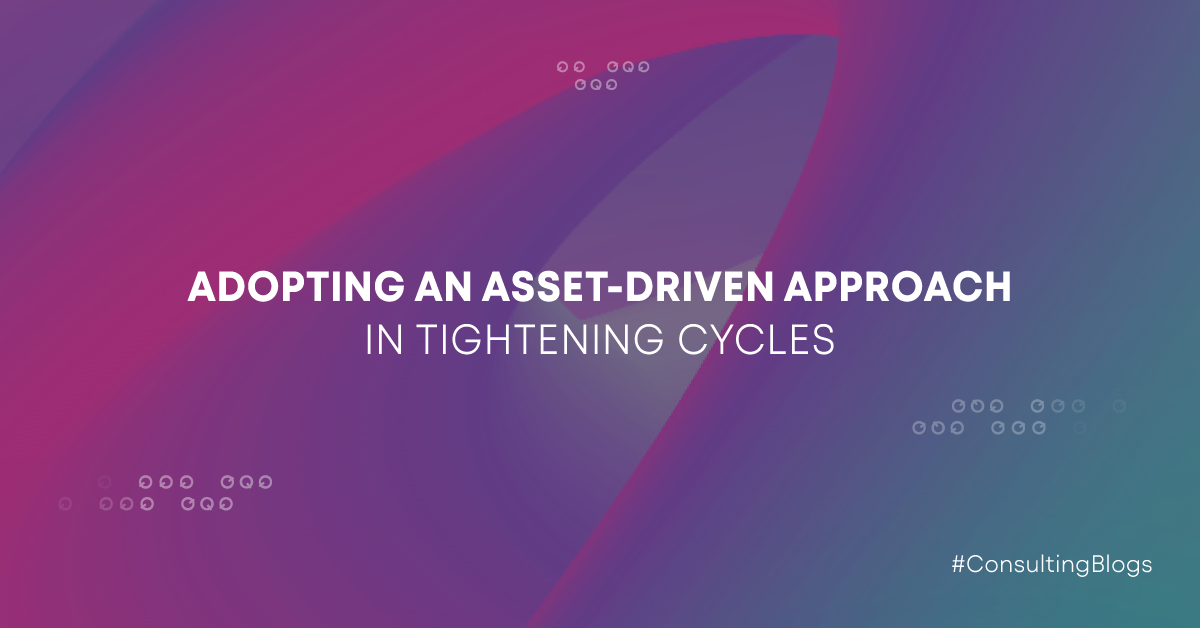QUALCO |
During a tightening cycle, central banks worldwide raise interest rates in an attempt to curb inflation. As a result, loan borrowers with floating rates, also referred to as adjustable or variable rates, face higher monthly payments due to increased interest expenses.
Consequently, non-performing and performing forborne exposures become more vulnerable to distress or default. These exposures involve borrowers who have extended their loan terms and are now at risk of facing difficulties meeting their obligations.
In such circumstances, adopting an Asset-Driven Approach becomes critical. This approach involves taking proactive measures, even when the credit is still in good standing, and the creditor has not yet taken possession of the collateral. By implementing this approach, borrowers can address and mitigate potential issues before they escalate further.
Navigating economic challenges in a contractionary monetary policy environment
In the face of rising living costs driven by inflation and the energy crisis, households' income stability has been disrupted, leading to soaring expenses in certain countries. To address this and maintain inflation below 3%, the FED, ECB, and BoE have been implementing a tightening monetary policy, including multiple interest rate hikes, for over a year. As a result, borrowers with variable interest rates are experiencing significant increases in their monthly payments.
Borrowers with limited financial resources face challenges in meeting their obligations due to a lack of appropriate savings allocation. Additionally, individuals with a poor credit history who have previously relied on forbearance measures during economic downturns are particularly prone to defaulting again. This is because many of them have experienced decreased purchasing power, making their previous restructuring plans unworkable based on their current income.
The Asset-Driven Approach
In the ever-changing financial environment, banks and servicers must adopt an Asset-Driven Approach to effectively manage loan portfolios and optimise recovery outcomes. Throughout the lending process, several factors, such as market conditions, location, maintenance, supply and demand dynamics, regulations, and economic conditions, significantly influence the value of real estate collateral. With the current increase in interest rates, borrowing costs rise, potentially leading to a decline in property values due to the impact on investment returns and demand.
A crucial initial step for financial institutions is to effectively categorise collaterals into primary segments such as residential and non-residential and secondary collateral subtypes including apartments, detached House, storehouses, parking, shop, plots, office, maisonette, land, industrial, hotel and other. This categorisation is pivotal in effectively monitoring the collateral portfolio and ensuring consistent practices when performing valuation calculations. It also allows banks and servicers to assess the asset's status, such as whether it is completed or under construction, enabling them to take appropriate actions based on its market value.
Two critical pillars underpin the effectiveness of the Asset-Driven Approach: the quality of valuation information and the delivery timeframe. These factors significantly influence how collaterals enter the market and reveal potential value-deteriorating factors. Moreover, they establish a reliable foundation for the valuation procedures of financial institutions, ultimately resulting in a cost-efficient strategy.
Workout Units responsible for managing denounced portfolios often allocate their legal actions' budget by following the Asset-Driven Approach. This approach involves assessing the collaterals' value to differentiate between the cases that require legal actions and those for which new restructuring solutions should be created and offered.
Enhancing system reliability
To ensure the effective execution of the Asset-Driven Approach, system reliability is of utmost importance. In the past, traditional financial institutions stored collateral information on separate legacy systems, sometimes inherited by servicers during loan securitisation. These systems were coupled with manual valuation processes, leading to potential inaccuracies, unnecessary costs, and a subpar customer experience.
The initial step towards system reliability involves establishing an analytical database encompassing a wide range of characteristics for different categories of real estate assets. These characteristics include technical, economic, and urban information, among others. Subsequently, modern financial institutions should integrate all their collateral management processes into a digital and scalable unified solution. This ensures adaptability to portfolio changes, enabling sustainable growth and accurate reporting that consistently adheres to regulatory requirements in each respective country.
How QUALCO can help
QUALCO Collections & Recoveries solution offers a comprehensive Collateral & Real Property Management Module designed to ease the rigorous management of Real Properties held by the financial institutions. The module provides an overview of collaterals and real properties, offering access to the following data:
1. Collateral Registry focusing on Real Property assets held as security, including:-1.png?width=1200&height=410&name=Artboard%201%20(9)-1.png)
Collateral types supported by the Module
2. Real Property Registry including:
The module also features an embedded web-mapping service that allows the users to easily find selected properties using different types of maps (Road, Satellite, Hybrid, Bird's Eye). Additionally, structured and non-structured data describing the property's features can be recorded, facilitating exposure to commercialisation channels if available.
To further complement the suite of services provided by QCR, an internal document repository is available, enabling the storage of various document types (PDF, JPEG, scanned image, Word/Excel) related to the assets.
Moreover, QUALCO Business Consulting can assist customers in implementing an Asset- Driven Approach by:
Our consultants possess extensive experience in managing all aspects of Collections & Recoveries, ranging from early arrears to legal cases and covering mortgages, consumer finance and small business loans. This experience, coupled with QUALCO's technological edge, translates into ongoing strategic advantages. By adopting our customer-centric approach, your business can maximise operational effectiveness, reduce complexity and risk and enhance overall strategy.
Ready to optimise collateral management with an asset-driven approach?
